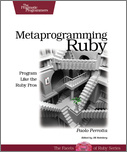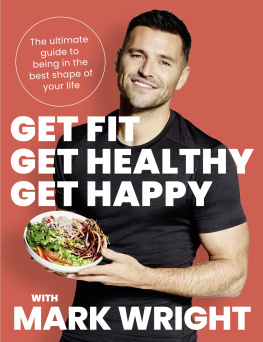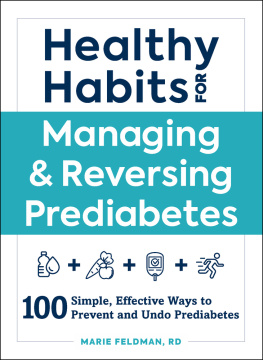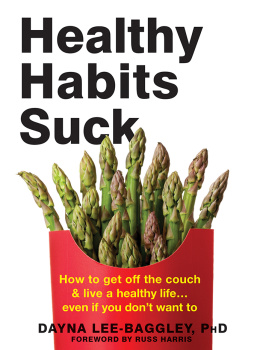The Healthy Programmer
Get Fit, Feel Better, and Keep Coding
by Joe Kutner
Version: P1.0 (June 2013)
Copyright 2013 The Pragmatic Programmers, LLC. This book is licensed tothe individual who purchased it. We don't copy-protect itbecause that would limit your ability to use it for yourown purposes. Please don't break this trustyou can use this across all of your devices but please do not share this copywith other members of your team, with friends, or via file sharing services. Thanks.
Dave & Andy.
Many of the designations used by manufacturers and sellers to distinguish their products are claimed as trademarks. Where those designations appear in this book, and The Pragmatic Programmers, LLC was aware of a trademark claim, the designations have been printed in initial capital letters or in all capitals. The Pragmatic Starter Kit, The Pragmatic Programmer, Pragmatic Programming, Pragmatic Bookshelf and the linking g device are trademarks of The Pragmatic Programmers, LLC.
Every precaution was taken in the preparation of this book. However, the publisher assumes no responsibility for errors or omissions, or for damages that may result from the use of information (including program listings) contained herein.
Our Pragmatic courses, workshops, and other products can help you and your team create better software and have more fun. For more information, as well as the latest Pragmatic titles, please visit us at http://pragprog.com.
Disclaimer
This book is intended only as an informative guide for those wishing to know more about health issues. In no way is this book intended to replace, countermand, or conflict with the advice given to you by your own healthcare provider, including physician, nurse practitioner, physician assistant, registered dietician, and other licensed professionals.
Keep in mind that results vary from person to person. This book is not intended as a substitute for medical or nutritional advice from a healthcare provider or dietician. Some people have a medical history, condition, and/or nutritional requirements that warrant individualized recommendations and, in some cases, medications and healthcare surveillance.
Do not start, stop, or change medications or dietary practices without advice from a professional healthcare provider and/or registered dietician. A healthcare provider should be consulted if you are on medication or if you have any symptoms that may require diagnosis or medical attention. Do not change your diet if you are ill or on medication, except under the supervision of a healthcare provider. Neither this nor any other book or discussion forum is intended to take the place of personalized medical care and treatment provided by your healthcare provider.
This book was current as of June, 2013, and as new information becomes available through research, experience, or changes to product contents, some of the data in this book may become invalid. You should seek the most up-to-date information on your medical care and treatment from your healthcare professional. The ultimate decision concerning care should be made by you and your healthcare provider.
Information in this book is general and is offered with no guarantees on the part of the author, editors, or The Pragmatic Programmers, LLC. The author, editors, and publisher disclaim all liability in connection with the use of this book.
Table of Contents
Copyright 2013, The Pragmatic Bookshelf.
Early praise for The Healthy Programmer
Joe Kutner offers practical, readable, and well-researched advice for those who sit at a keyboard. Ive incorporated his health-and-fitness regimen into my writing routine.
| Dr. Steve Overman |
| Professor of Physical Education (retired), Jackson State University |
Health and programming should go together like a horse and carriage. You cant have one without the other. In our sedentary office work, we often forget that an absence of health is as bad as a lack of programming skills. Joe points out a dozen areas where you and I can do better. Every office worker should read this book and self-reflect on health improvements.
| Staffan Nteberg |
| Author of Pomodoro Technique Illustrated |
This book introduced me to the term conditioned hypereating . It felt life-changing. Being aware of this has made it easier to experiment with smaller, less-ambitious changes that actually have a chance at succeeding. Im very curious to see where this puts me a year from now.
| Katrina Owen |
| Developer, Jumpstart Lab |
The Healthy Programmer is excellent. In many ways its a spiritual continuation of The Hackers Diet .
| Stephen Ball |
| Senior Rails programmer, PhishMe, Inc. |
Foreword
Ask a nondoctor about the likely afflictions of young patients, and he or she will most likely mention ankle sprains, tendonitis, and a few types of unpalatable infections.
However, the truth is rather less exciting, and certainly less related to sports. Our list instead includes back pain, headaches, irritable bowel syndrome, upper-limb syndromes, and low mooda list of maladies that is almost without exception due to a lifestyle filled with time spent stationary indoors, excess typing and repetitive wrist movements from mouse to keyboard, and inappropriate dietary intake.
Interestingly and, may I say, without coincidence, these themes mirror the contents of this book, with chapters related to topics such as the right chair, preventing eye strain, agile dieting, and the fascinating topic of vitamin D deficiency, which is only just being adequately explored in the scientific and medical literature.
Its a clich often used in the medical field, but prevention is better than cure is both relevant and highly correct. As doctors we so often find that by the time a patient presents with wrist or back pain, it will remain no matter what we do. Yes, we try everything that we have: analgesics, antispasmodics, physiotherapy, and even alternative therapies such as acupuncture and chiropracty. However, they tend not to work. There are often two factors at play. The first is that our patients, due to the pressure of their work, are incapable of improving the factors that drive their illnesses; the second is that good advice is hard to find and evaluate. For example, a simple Internet search for back-pain remedies will yield thousands of non-evidence-based diagnoses, cures, and quackeries. Is it a surprise that doctors, researchers, and even IT professionals have difficulty evaluating and recommending specific interventions?
In this book the author manages to take the most recent scientific literature, dissect it, analyze it, and apply it to a group of professionals whose needs are very specific. Of particular importance here is the focus not only on the immediate physical complications that can result from working as a software developer, but also on long-term cardiovascular health. It is now well recognized that those who spend their work lives sitting at computers, taking few total steps per day, are significantly more likely to suffer from hypertension (high blood pressure) and type-2 diabetes, both of which can have serious long-term consequences and increase the risk of heart attacks and strokes.
For a software developer who made the leap from looking after patients to looking after code (and myself!), it is refreshing and enlightening to see so many of the problems that I reflected upon for myself being given the proper exposure to a much wider audience. This is a text that both new and veteran developers should, and I might even say must , read.













